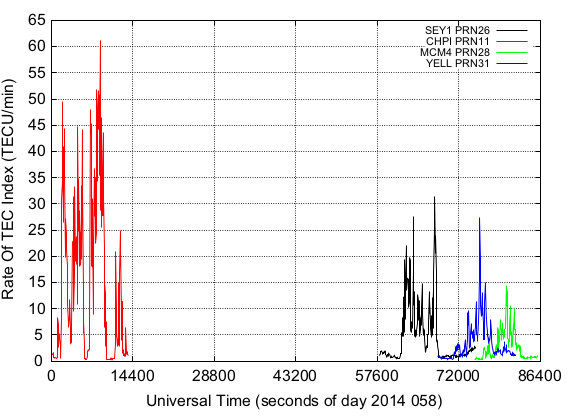Rate ot TEC Index (ROTI)#
The ROTI, as proxy for a measure of scintillation, was introduced in [Pi et al., 2013], and basically consists in computing the standard deviation of the rate of TEC over a certain time interval. It can be easily computed using the ionospheric (geometry-free) combination of GNSS carrier phase measurements. In short, the steps to compute it are described in Algorithm .
Algorithm (Satellite ROTI calculation)
Inputs Carrier-phase GNSS measurements at two bands (e.g. L1 and L2)
Output Time series of ROTI (TECU/minute)
For each GNSS satellite
Compute the ionospheric (geometry) free combination of carrier phases at frequencies \(f_1\) and \(f_2\): \(LI = L1 - L2\)
Compute the time difference of \(LI\): \(\Delta LI = \frac{\delta LI}{\delta t}\)
Compute the time difference of \(STEC\): \(\Delta STEC = \Delta LI / \alpha_{LI}\), where \(\alpha_{LI} = 40.3 \cdot (\frac{1}{f_2^2} - \frac{1}{f_1^2})\)
Compute the standard deviation of the \(\Delta STEC\) across consecutive time intervals of e.g. 5 minutes
An example of the ROTI calculation for a 1Hz dataset of SEY1 station (2014, doy 58) can be found in [Juan et al., 2017]

